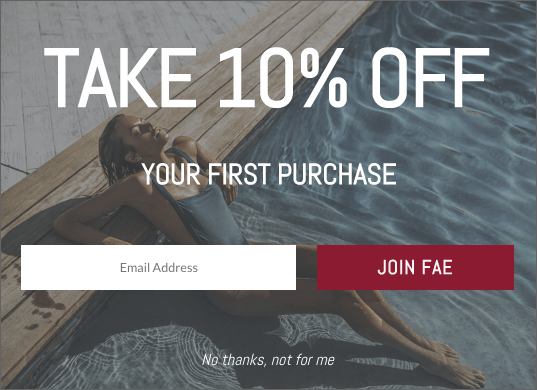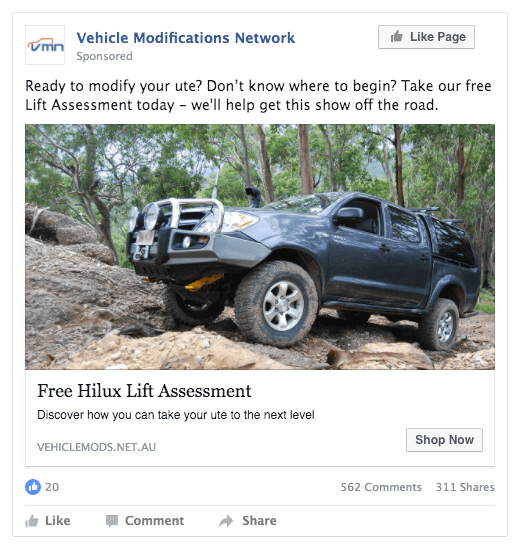Growing your customer base is an incredibly important part of any good business strategy – especially in ecommerce. But, as we showed in a previous post, the real profits come from nurturing your existing customers. Sure you need a steady stream of new customers coming in, but if you can balance this with simultaneously working towards increasing your average order value and frequency, then you’re really scaling.
So how might we tackle that challenge? After more than five years in the digital marketing business, we’ve found ‘Lifecycle Marketing’ practices are by far most successful.
As the online retail space becomes more and more crowded, it’s no longer good enough to just attract new customers. You have to keep them. A strategy that keeps customers coming back is now fundamental for any ecommerce business that wants to excel.
So let’s take a look at how we do things at Andzen. These are our core elements of Lifecycle Marketing.
Data Capture
Data capture is part and parcel of any good digital marketing strategy. In order to properly utilise the power of email (the basis of modern digital marketing), you first need to build an audience. And that requires building motivation for leads to subscribe.
This is what we call ‘Permission Marketing’; trading great deals on your products or exclusive access to new products or content for contact details and other valuable customer data.
Offers
One of the most tried and true methods of capturing subscriber data is to offer a discount in exchange for their email address. You’ll have no doubt seen this trend across the internet. When a new visitor hits a website, a pop-up will trigger and offer a small discount incentive if they subscribe – usually 5-20%.
The beauty of this method is not only have you gained a new subscriber, but more often than not, you’ve also made a sale.
Great content
You can achieve similar results through clever content or inspiring designs. If you provide content your audience is interested in, they’ll be happy to trade their email address in return for more of it.
Enquiry
Data can also be captured through enquiry forms. If your product or service is expensive or complex, it’s wise to include enquiry forms throughout your website that will allow the potential customer to get in touch directly with you. This in itself is a form of data capture.
Enquiry forms can come in many shapes and sizes. Complex in-line forms, mailto links, or even surveys.
Nurture
Now you have your leads contact details, it’s time to put them to work. This is where investing in a highly-converting Welcome Series really pays off.
There are two important sides to an effective nurture strategy. The Yin and Yang are:
Showing off your products
The benefits of your product, unique selling point, and position in the market are all incredibly important. At the end of the day, you need to educate prospects on your product if you want them to convert. But that’s not all. You’ll also need to spend some time…
Showing off your brand
Boosting brand affinity is important. Especially in the highly competitive world of ecommerce. If you want to to keep a customer for life, you’ll need to sell them your brand – not just your product. This is where great design and storytelling come into play.
Balance these two properly, and you’re conversion will be up significantly in no time.
Retention
Once you’ve attracted your customer, and nurtured them to a sale, you might think your work is finished. But in fact, it costs five times more to attract a new client than it does to keep an existing one. If we look at the ROI, it’s in the ‘Retention’ stage that Lifecycle Marketing really starts to perform for your business.
In order to ensure you’re getting the most out of all the hard work you’ve already put in, you’re going to want to segment your subscriber base.
Profiling and targeting for more relevant content
Profiling your customers allows you to better target the marketing materials you send to them. The more relevant the content, the higher the conversion rate.
You can start this off straight away. Rather than asking your customers outright for more information, you can put the data you’ve already received from them to work. By integrating your ecommerce and emarketing platforms, you can segment your customers based on their purchase history.
Cross sells and upsells based on this data
When you know your customers, you’ll be able to send them products you know they’ll want to see, and withhold the ones you know they want be interested in. This level of targeting personalises your campaigns and separates your marketing from spam.
In the attention economy, relevance is everything. Your customer will thank you for respecting their time by remaining subscribed, and continuing to purchase your product!
Advocacy
So where do we go from here?
There’s one last step in the Lifecycle Marketing timeline: Advocacy. When you know a customer loves your brand, you should take the opportunity to encourage them to share that passion with their friends and family. Customers can advocate for you in many different ways:
- Referrals to friends and family
- Social sign ups, likes and shares
- Online reviews
By rewarding your customers in some way – either with an offer or discount, or just a heartfelt thank you for their business – you can help to encourage them to take further action to support your brand.
Optimisation
As with any great digital strategy, you should never stop monitoring and optimising your Lifecycle Marketing efforts. By actively watching your reports and analytics, you’ll be able to identify what’s doing well and what isn’t – then adjust and refine as required.
Data-driven lifecycle marketing tactics are by far the most powerful tool in your ecommerce kit.
If you’d like to learn more about Lifecycle Marketing, or you’d like to develop a similar strategy for your business, please don’t hesitate to get in touch!



